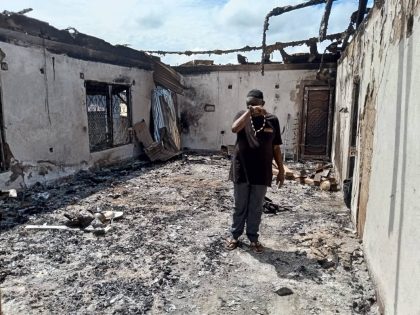Maestro Sidibé
The author, also a photographer, writes about receiving the sad news that Malick Sidibé, the Malian master photographer, has died, at the age of 80.

"Regardez-moi," 1962. By Malick Sidibe.
I have never been to Bamako, never been to Malick Sidibé’s studio in that city. In the later years, he would receive visitors, and his son would take their pictures against those famous Sidibé backdrops. But the heyday of the work had been in the 60s and 70s in that post-independence ferment that one also heard in the silvered and world-knowing tunes of the Super Rail Band and Boubacar Traoré, that galaxy of greatness.
The Maestro Sidibé, the Eye of Bamako, was blind in one eye. That is a time-saver for a photographer, to see the world with monocular vision as a camera does. An optical faculty ever-ready to pounce, economical as a cat.
Observe the immediacy of “Regardez-moi!” Could a photograph be more audible than this? This young man of fifty four years ago is full of life, zest, display, and joy, and the Eye of Bamako catches with unerring sympathy that irrepressible presence. Sidibé prised photographic practice from its classic studio precincts, where it had been brought to perfection by Seydou Keïta. They were of the line of great duos that sometimes haunt the arts, Picasso and Matisse, Hokusai and Utamaro. Keïta worked during the day. Sidibé made the night real: parties, dancing, flash photos. He was the obverse, keyed in to the unexpected point of view.
And the stamina! “At night, from midnight to 4 am or 6 am, I went from one party to another. I could go to four different parties. If there were only two, it was like having a rest. But if there were four, you couldn’t miss any. If you were given four invitations, you had to go. You couldn’t miss them.” He drank the full draught, and retained the evidence.
In “Je veux être seule,” a beautiful young woman has asked specifically to be shown without the man who was in the picture. The photographer is at her service, and so the man is dodged away into a ghostly nothing. No questions asked.
Malick Sidibé made many great pictures of African modernity. They will outlive him, and us. He showed us as we were, between the desire for solitude (Je veux être seule) and the wish to be seen and celebrated (Regardez-moi!), between the contained and the exuberant. All of it is there.
I received the sad news today that Malick Sidibé has died, at the age of 80. May his soul rest in peace.



















